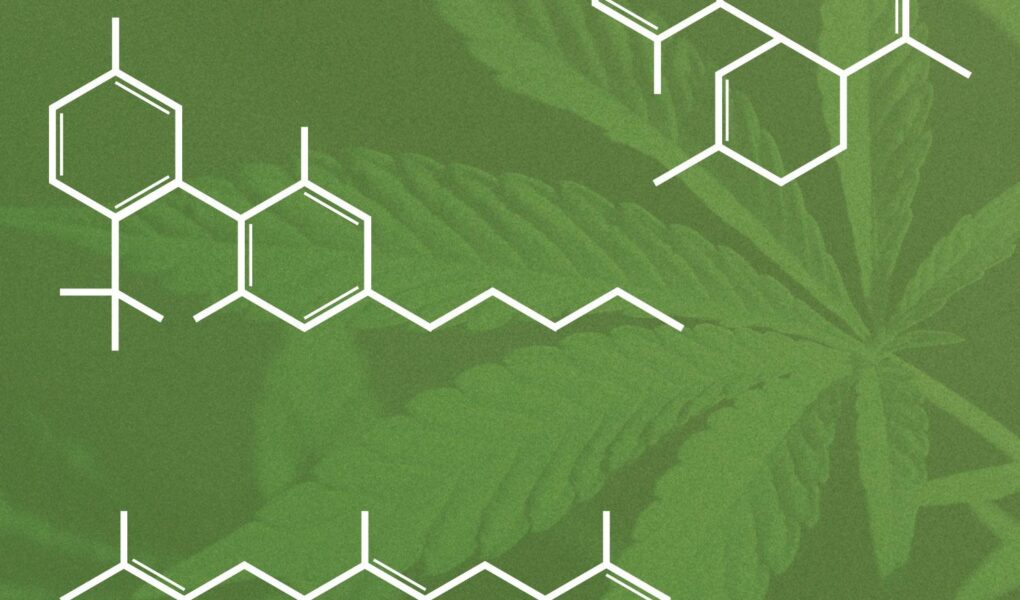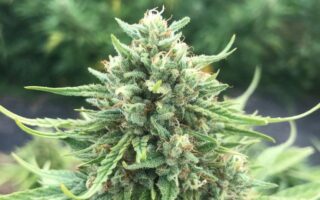Unlocking the Secrets of the Green Leaf: Understanding the Active Ingredient in Marijuana
As the world leans into an era of increased acceptance and legalization, a green revolution has taken root in society’s consciousness. From wellness enthusiasts to curious newcomers, the fascination with marijuana is blooming like the plant itself. Yet, beneath the surface of this multifaceted herb lies a complex chemistry that sparks both intrigue and inquiry. At the heart of this botanical wonder is its active ingredient, a compound that holds the key to understanding its effects, benefits, and potential risks. In this exploration, we will delve into the world of cannabinoids, focusing on the most notable among them—tetrahydrocannabinol, or THC. Join us as we untangle the science behind marijuana’s active ingredient and discover what makes this plant both a source of relaxation and the subject of scientific scrutiny.
Table of Contents
- Understanding THC: The Principal Psychoactive Component
- Exploring CBD: The Therapeutic Compound of Cannabis
- Other Cannabinoids: The Lesser-Known Active Ingredients
- Choosing the Right Strain: Tailoring Effects to Your Needs
- Q&A
- Final Thoughts
Understanding THC: The Principal Psychoactive Component
Delta-9-tetrahydrocannabinol, more commonly known as THC, is the principal psychoactive component of cannabis. It engages with the body’s endocannabinoid system, particularly by binding to CB1 receptors in the brain. This interaction produces a variety of effects that are widely recognized, including altered states of consciousness, euphoria, and enhancements in sensory perception. Understanding THC is pivotal when discussing the effects of marijuana as it is often the most prominent agent responsible for the “high” users experience. Factors such as dosage, method of consumption, and individual tolerance can significantly influence the overall impact of THC on a user.
In addition to its psychoactive properties, THC also exhibits several medicinal benefits. Some of the key therapeutic effects include:
- Appetite Stimulation: Often used to combat nausea and promote food intake.
- Pain Relief: Assists in managing chronic pain and inflammation.
- Reduction of Anxiety: Can help alleviate anxiety in some users, although it may have the opposite effect in high doses.
| Property | Effect |
|---|---|
| Psychoactivity | Creates a euphoric “high” |
| Medicinal Use | Soothes symptoms of various conditions |
| Dosage Sensitivity | Effects vary by individual tolerance |
Exploring CBD: The Therapeutic Compound of Cannabis
Cannabidiol, commonly known as CBD, is a non-psychoactive compound found in cannabis that has garnered significant attention for its potential therapeutic benefits. Unlike THC, the infamous compound responsible for the “high” associated with marijuana, CBD interacts differently with the body’s endocannabinoid system, primarily influencing receptors related to pain, mood, and immune responses. This unique interaction contributes to a wide range of applications, making it a popular choice for individuals seeking natural alternatives for health and wellness.
Research suggests that CBD may offer a variety of health benefits, including:
- Pain relief: Potentially reducing inflammation and chronic pain.
- Anxiety management: Helping alleviate symptoms of anxiety and depression.
- Improved sleep: Assisting in regulating sleep patterns for better rest.
- Neuroprotective properties: Potentially aiding in the treatment of neurological disorders.
Studies are ongoing to fully understand the extent of CBD’s capabilities and the safest and most effective ways to utilize this compound. The growing acceptance of CBD across various regions has led to a rise in products that incorporate CBD, from oils and tinctures to edibles, thus allowing individuals to choose formats that suit their lifestyles. As the landscape of cannabis research evolves, so too does the promise of CBD as a natural therapeutic option.
Other Cannabinoids: The Lesser-Known Active Ingredients
The world of cannabinoids extends far beyond the widely recognized THC and CBD. Numerous lesser-known compounds play pivotal roles in the effects of cannabis. Among these, CBG (Cannabigerol) stands out as a “parent” cannabinoid, often referred to as the ”mother of all cannabinoids.” CBG is non-psychoactive and is being studied for its potential therapeutic benefits, including anti-inflammatory properties and its ability to promote neurogenesis. Additional cannabinoids like CBN (Cannabinol) may help with sleep and anxiety, enhancing the entourage effect when combined with other compounds found in marijuana.
Other cannabinoids worthy of mention include:
- THCV (Tetrahydrocannabivarin): Known for its appetite-suppressing properties, THCV may offer benefits for weight management.
- CBC (Cannabichromene): This cannabinoid is believed to have anti-inflammatory effects and may contribute to mood elevation.
- Delta-8-THC: A less potent cousin of Delta-9-THC, Delta-8-THC may provide a milder high with fewer psychoactive effects.
| Cannabinoid | Key Benefits |
|---|---|
| CBG | Anti-inflammatory, neuroprotective |
| THCV | Appetite suppressant |
| CBN | Potential sleep aid |
| CBC | Anti-inflammatory, mood enhancer |
| Delta-8-THC | Milder psychoactive effects |
Choosing the Right Strain: Tailoring Effects to Your Needs
When navigating the vast world of cannabis, understanding the diverse strains and their unique effects is essential for tailoring your experience. Different strains can evoke a variety of sensations and benefits, primarily due to the active compounds they contain, particularly cannabinoids and terpenes. Some strains are known for their uplifting and energizing qualities, making them perfect for daytime use, while others may help with relaxation and sleep, catering to those seeking relief from stress or insomnia. Here are some common effects associated with various strains:
- Sativa Strains: Energizing, uplifting, enhances creativity.
- Indica Strains: Calming, sedative, pain relief.
- Hybrid Strains: Balanced, versatile, effects vary based on dominant strain.
To further assist in choosing the right strain, it can be helpful to look at a breakdown of cannabinoid profiles, specifically THC (tetrahydrocannabinol) and CBD (cannabidiol). THC is responsible for the psychoactive effects that many desire, while CBD offers therapeutic benefits without the high. Selecting a strain comes down to personal preferences and desired outcomes. Below is a simple table highlighting a few popular strains and their primary effects:
| Strain Name | Type | Main Effects |
|---|---|---|
| Cinderella 99 | Sativa | Uplifting, euphoric |
| Granddaddy Purple | Indica | Relaxing, helping with insomnia |
| Blue Dream | Hybrid | Balanced, gentle euphoria |
Q&A
Q: What is the active ingredient in marijuana?
A: The primary active ingredient in marijuana is a compound known as delta-9-tetrahydrocannabinol, commonly referred to as THC. This psychoactive component is responsible for many of the plant’s mind-altering effects.
Q: Are there other important compounds in marijuana?
A: Yes, absolutely! Besides THC, marijuana contains over a hundred different cannabinoids, with cannabidiol (CBD) being the most notable. Unlike THC, CBD does not produce a high and is often sought after for its potential therapeutic benefits.
Q: How does THC affect the body?
A: THC interacts with the body’s endocannabinoid system, which plays a vital role in regulating various physiological processes. When THC binds to cannabinoid receptors, it may lead to effects such as euphoria, altered perception, relaxation, and an increase in appetite.
Q: Is THC the only contributor to marijuana’s effects?
A: Not at all! The effects of marijuana are a result of the complex interplay of various cannabinoids, terpenes, and flavonoids present in the plant. Each strain can have a unique profile that influences its overall effects.
Q: Can the levels of THC vary between different strains of marijuana?
A: Certainly! Strains of marijuana are often classified into three categories: indica, sativa, and hybrid. Each variety can have varying levels of THC, which can significantly affect the user’s experience and the strain’s medicinal applications.
Q: Is THC legal everywhere?
A: The legality of THC varies widely around the globe. In some regions, it is fully legalized for recreational and medicinal use, while in others it remains prohibited or regulated. It’s always wise to check local laws before engaging with marijuana products.
Q: Are there any risks associated with THC consumption?
A: Yes, while THC can offer benefits, it can also have side effects, particularly in high doses. These may include anxiety, paranoia, impaired memory, and psychomotor impairment. It’s important for users to approach consumption mindfully and consider their own tolerance levels.
Q: What are some potential medicinal uses of THC?
A: Research suggests that THC may help alleviate a range of conditions, such as chronic pain, nausea from chemotherapy, and muscle spasms associated with multiple sclerosis. However, patients should consult healthcare professionals before integrating THC into their treatment plans.
Q: Should I choose a product with THC or CBD?
A: The choice between THC and CBD largely depends on individual needs and desired effects. Those seeking psychoactive experiences might opt for THC, while those focusing on therapeutic benefits without a high may prefer CBD. Many products combine the two for a balanced effect.
Q: What’s next for THC research?
A: As legislation opens up across the globe, research on THC and its effects is expanding. Future studies are likely to explore its therapeutic potential, long-term effects, and safe consumption practices, contributing to a better understanding of this intriguing compound.
Final Thoughts
the intricate world of marijuana reveals a fascinating tapestry woven from its myriad compounds, with cannabinoids at the heart of it all. As we’ve explored, the active ingredient most commonly associated with marijuana is tetrahydrocannabinol (THC), the compound known for its psychoactive effects and therapeutic potential. However, it’s essential to remember that THC is just one player in a larger ensemble, with CBD and other cannabinoids contributing to the overall experience and benefits of the plant. Understanding these active ingredients not only enhances our appreciation of marijuana but also informs responsible use and further research into its medical applications. As science continues to unravel the complexities of cannabis, staying informed will empower us to make educated decisions in a landscape that is ever-evolving. In this journey of discovery, the dialogue around marijuana and its constituents is just beginning—so let curiosity be your guide as we navigate this fascinating frontier.



